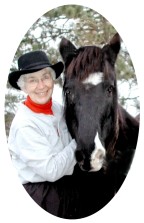"Morning on the Little Cannon River"

Beautiful… or not really?
It’s a beautiful stream… the Little Cannon River.
Its water flows swiftly across rocky ledges and slows down over spring-fed sandy bottoms.
Brown trout hide in its shadows and rare minnows dart in its pathway.
Cascading water splashes in the sunlight to reflect myriads of prism colors.

Beautiful… or not really?
It’s a beautiful stream… the Little Cannon River.
Its water flows swiftly across rocky ledges and slows down over spring-fed sandy bottoms.
Brown trout hide in its shadows and rare minnows dart in its pathway.
Cascading water splashes in the sunlight to reflect myriads of prism colors.
And then someone warned it could be hazardous to your health.
It was a difficult article to write.
The results of the tests were scary.
If they were right, we had to alert the public. If not, we had to alert the public.
The fact was that E.coli bacteria was found in the Little Cannon River.
Many folks living near it have been swimming and playing in that river all their lives.
One of those, the editor of this newspaper, was one of the volunteers testing the river.
He was a valid source.
He was a valid source.
The Cannon River Watershed Partnership (CRWP), who received the grant to test area streams, is also a valid source.
So why was I questioning them?
It’s my job.
Also, I live by that river and my children and grandchildren have been swimming in it.
And I didn’t want it to be true.
It’s my job.
Also, I live by that river and my children and grandchildren have been swimming in it.
And I didn’t want it to be true.
My research came up with varying insights on the problem.
I found that the strain of E.coli that is toxic wasn’t being tested. It’s too expensive to do that. But the E.coli that was found can indicate the worse strains. And some people believe there are more strains that are bad.
I found that the strain of E.coli that is toxic wasn’t being tested. It’s too expensive to do that. But the E.coli that was found can indicate the worse strains. And some people believe there are more strains that are bad.
So this is the puzzle.
If you don’t tell people that it could be there, and they get sick, how responsible do you feel?
On the other hand, how careful do you have to be?
A website of a law firm representing victims of food poisoning gave some usual safety precautions but also warned: do not play in any non-chlorinated water. (But I have heard some scary problems with chlorinated pools.)
They also warned: …do not touch or pet farm animals. They explained that even using wipes to clean your hands afterwards may not be adequate.
They also warned: …do not touch or pet farm animals. They explained that even using wipes to clean your hands afterwards may not be adequate.
After reading this type of information you wonder what should you do?
Just how safe can we be, or on the other hand, how safe do we choose to be?
In the past, folks probably didn’t swim in the Little Cannon River when a rainfall made it muddy and high. It would be more likely to be polluted from anything at that time.
As far as not touching farm animals? What about the emotional benefits of having a close relationship with animals?
Maybe we should try to be more careful… but still have fun.
.


